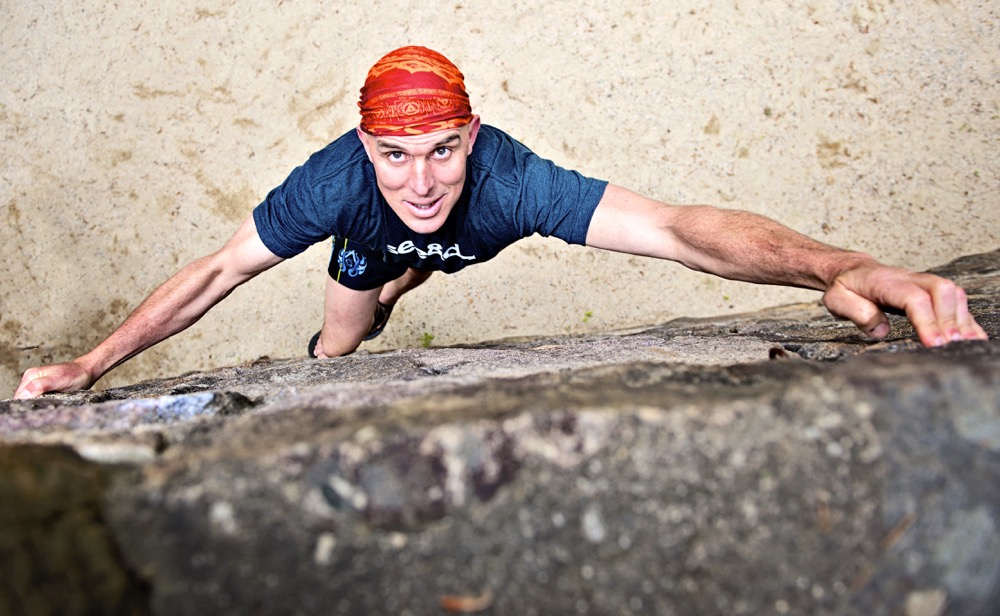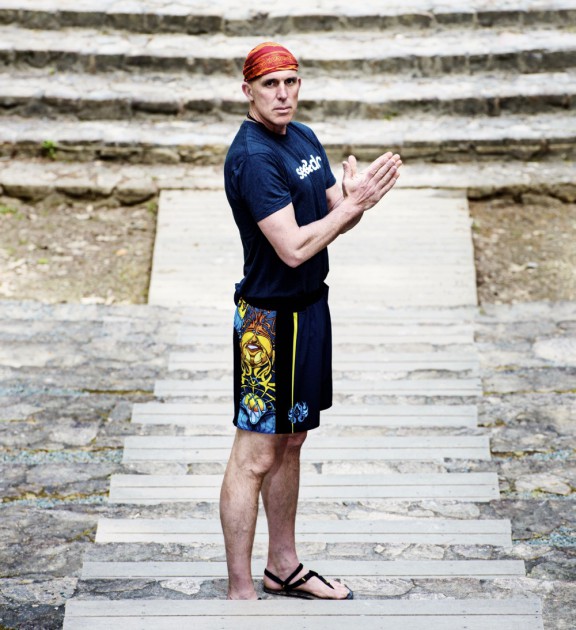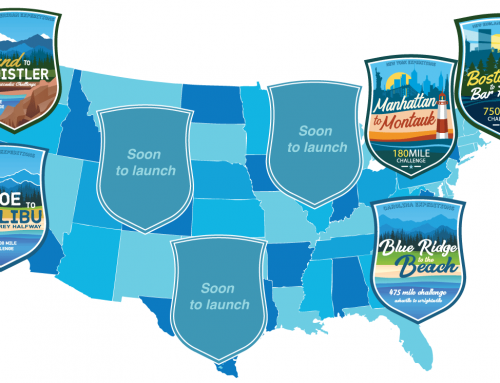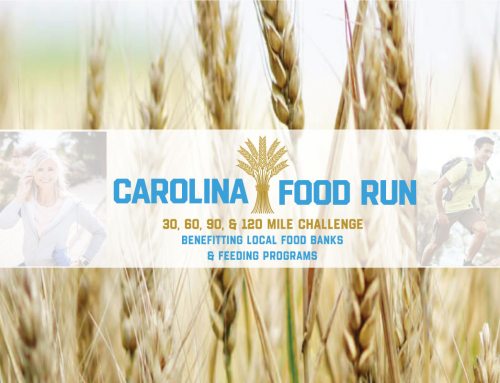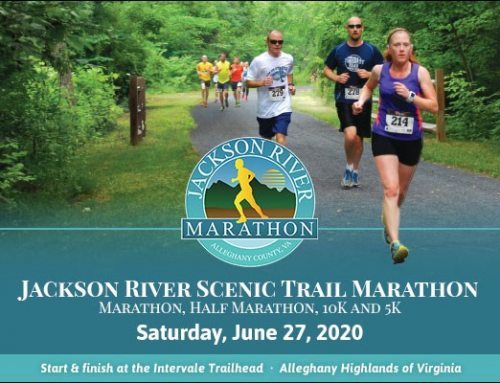<Photo Credit> Tamara Lackey, Tamara Lackey Photography
By Joe Nuss
In his bestselling book Born to Run, Christopher McDougall introduced the indigenous Tarahumara people and ex-boxer-turned-runner Caballo Blanco to runners world-wide. Through his experience with the Tarahumara and Caballo Blanco, McDougall reveals the secrets of distance running, ushering in the wave of barefoot and minimalist running. The book is currently being turned into a movie with Matthew McConaughey starring as Caballo Blanco.
Now, in his new book Natural Born Heroes, McDougall follows in the footsteps of World War II Resistance fighters on the island of Crete. The fighters plot a daring abduction of a general in the midst of Nazi occupation. As McDougall retraces their steps in the rugged mountains he experiences the extreme physical challenges they faced and discovers surprising truths about fitness and heroism. Like Born to Run this new book will challenge you to rethink what you know about fitness.
I recently caught up with McDougall at Chapel Hill’s Flyleaf Books during his fun run and speaking engagement. Not having read his book yet, I was a bit surprised at our pre-race warm-up of a funky martial arts type exercise, crab walking, jumping and a variety of other natural movements. When the run started I ran side by side with McDougall to learn more about the man yet also hoping he didn’t check out my far-from-minimalist New Balance 1080’s. McDougall didn’t check out my shoes, or preach about barefoot or minimalist running. Between his talk and our photo shoot I discovered a pretty cool down-to-earth guy who grew up not far from me in Pennsylvania who loved twitter and knife-throwing. Wait? Knife-throwing?!?!
EM: Your wife says you tweet as often as a teenage girl. What’s up with you and twitter?
CM: It’s the perfect recreational vehicle for writers with ADD. It’s better than blogging, at least for productivity, because you don’t spend a half-day crafting a tweet. You pop in, pop off, and pop out.
EM: Let’s talk about your scary fascination with throwing knives in a bookstore. Where else do you throw knives and why?
CM: I’ve got a target in the yard behind my house and I keep the knives right by the back door. Whenever i get restless (see a theme developing here?), I head out and chuck some steel for a while. There’s no physical act as immediately gratifying as hitting a target. I’m convinced it’s hard-wired into our instincts from our long ancestral roots as hunter-gatherers.
EM: Do you know first aid?
CM: Liquid Band-Aid. The miracle cure! And I’m only half-kidding. I cut myself on stuff all the time and just rinse it out and seal it up.
EM: I always wear sneakers and keep an extra pair in the trunk of my car in case I get a chance to run at lunch. What does a guy like you keep in the trunk of his car?
CM: I forage for a lot of firewood, so I keep a crosscut saw and an axe in the trunk. I also carry lots of cashews and jerky; i’m always finding myself hungry and far from food.
EM: Speaking of cars, what kind of car does a minimalist runner like you drive?
CM: Old beaters. I’ve got a ’99 Ford Explorer, a ’79 F150, and an ’83 Dodge Ram pickup. Three vehicles is far from minimalist, but I justify myself by arguing that only one of them is ever functioning at a time.
EM: If you were a car or truck, what would you be and why? The Chevy Apache you were drooling over in Chapel Hill, maybe?
CM: I’m not worthy of being an Apache. Too rare and perfect. I’d be happy to come back as a ‘70s era Ford. Dependable and subtly stylish.
EM: What did you like best about Chapel Hill?
CM: It’s such a delightfully human-sized place. It has all the benefits of a city, but it feels like a village and is bursting with green in every direction. As soon as I got home, I told my daughters, “You’ve got to apply to UNC.”
EM: You were born in Philadelphia and live in Lancaster County in Pennsylvania, which is home to many Amish people. Has their minimalism influenced you at all?
CM: For sure. So many things that the rest of us are rediscovering have been mainstays of Amish life forever. Like caring for the land, eating local, caring for the body with minimal use of drugs, prioritizing people and friends over screens and distractions.
EM: Can we learn anything about fitness from the Amish?
CM: Absolutely. Do you know what the obesity rate is among the Amish? Three percent. The murder rate? Almost zero. Clearly they’re doing something right. Their physical and mental health comes from being outdoors all the time and eating real food they prepare themselves, not processed.
EM: On to your new book. You said that Born to Run started with one simple question: why does my foot hurt? What question inspired you to write Natural Born Heroes?
CM: Sort of a similar question. I was reading about Resistance fighters during WWII and began wondering, “How on earth did they survive? Physically, what’s the secret of living off the land while fighting the most lethal force in human history?” I thought there had to be some amazing fitness secrets that the rest of us could learn from them.
EM: How has researching and writing this story changed the way you train?
CM: For sure. Now I’m doing things I’d never done before, like Parkour and knife-throwing and rope-climbing. Overall, I’m trying to make my movements more wild and natural.
EM: Do you always run barefoot? If not, what specific footwear do you wear and why?
CM: I look at shoes the way I look at clothes: if i don’t need them, i don’t wear them. I go barefoot unless there’s some need for protection, like a rocky path or an unknown trail where i might run into something hazardous. I’m not against shoes; they can be a fantastic source of protection. My problem is with all the hocus-pocus phony gizmos they stick into the shoes to persuade you they’re helping, like stability and cushioning and motion-control devices. No one needs any of that junk. My footwear of choice nearly always is Barefoot Ted’s Luna Sandals. They’re amazing.
EM: Natural Born Heroes, like Born to Run, blends an amazing adventure story with the science of fitness. How do you hope this adventure story will inspire its readers?
CM: Hopefully it will remind them that other people just like them have taken on remarkable challenges and succeeded. So if others can do it, so can we.
EM: How can the story of a shepherd who has had a war thrust upon him inspire a desk jockey who doesn’t run and hasn’t been to the gym in months, if ever?
CM: I want to re-kindle that little spark in all of us that desires to make something useful from our lives. We never know when a life-changing challenge will hit us in the face, so wouldn’t you like to be ready?
EM: Natural Born Heroes is set in the mountains. How can a person who lives in a big city benefit from reading this book?
CM: That’s where Parkour comes in. Parkour is natural fitness for the city dweller. It specifically looks at ways to use natural movement in an urban environment.
EM: How can a dedicated and fit runner, barefoot or otherwise, benefit from natural fitness?
CM: By heritage, we’re all-around athletes. We’re not runners, or swimmers, or climbers; we’re all of us ALL those things. The reason we run into problems with our fitness, like injury and lack of motivation, is because we’ve become too limited and programmatic. Once you return to natural movement, you’ll feel stronger and more inspired.
EM: As a foreign correspondent with the AP, you covered wars in Rwanda and Angola. Most Americans won’t experience anything like that in their lifetime. Why do you feel we need to learn to develop our heroic potential?
CM: Heroism isn’t about being brave; it’s about being preparing your strength, skills, and spirit so that every day, you’re becoming a little better than you were before. There’s no finish line or final exam for that kind of self improvement; it’s gratifying because you get the benefits all the time.
EM: Runners and triathletes are wired to always strive for personal bests, either in distance or time. How does someone who practices natural movement measure their success with it?
CM: REAL success is personal improvement, not just measuring yourself against someone else. Artists are dedicated to mastering skills, and I think fitness should adopt the same approach. There’s nothing wrong with friendly competition once in a while, but this attitude we’ve developed of constantly focusing on performance is one of the reasons we battle burn out and injuries. Parkour is dogmatic about NO competitions, ever. There’s a lot to be learned from that.
EM: Please list your Top 3 Fitness Activities.
CM: Cutting firewood; trail running; cutting more firewood.
EM: Please list your Top 3 “Inactivities”.
CM: reading; watching meat cook over a flame; kicking back with beers and people who know how to bust each others’ stones.
EM: Besides your books, what is the one book every runner should read?
CM: “The Cloud Garden.” Just because it’s such a bizarre miracle of a book.
EM: “Yinz”or “Youse”?
CM: Youse. I’m South Philly born and bred.
EM: “Creek” or “Crick”?
CM: Used to be creek, but after 10 years in Lancaster County, I’m all about crick.
EM: Anything to say about pot pie?
CM: “Back off. That’s mine.”
EM: What is your reaction to the fallout from the Five Fingers lawsuit?
CM: That’s what comes from really believing in your product and making the mistake of getting too excited in your advertising. there’s nothing wrong with the product; the problem came from making promises in their advertising that they couldn’t support with science. Notice that Nike NEVER promises their shoes will do anything.
EM: Tell us about the finisher’s medallion you wore during our photo shoot.
CM: Caballo’s girlfriend gave me that. She had them made for the last race he ever put on, and after he died, she made sure I got one. I’ve been wearing it ever since. He was one of a kind, and he was fortunate to spend his last years with a woman like her by his side.


